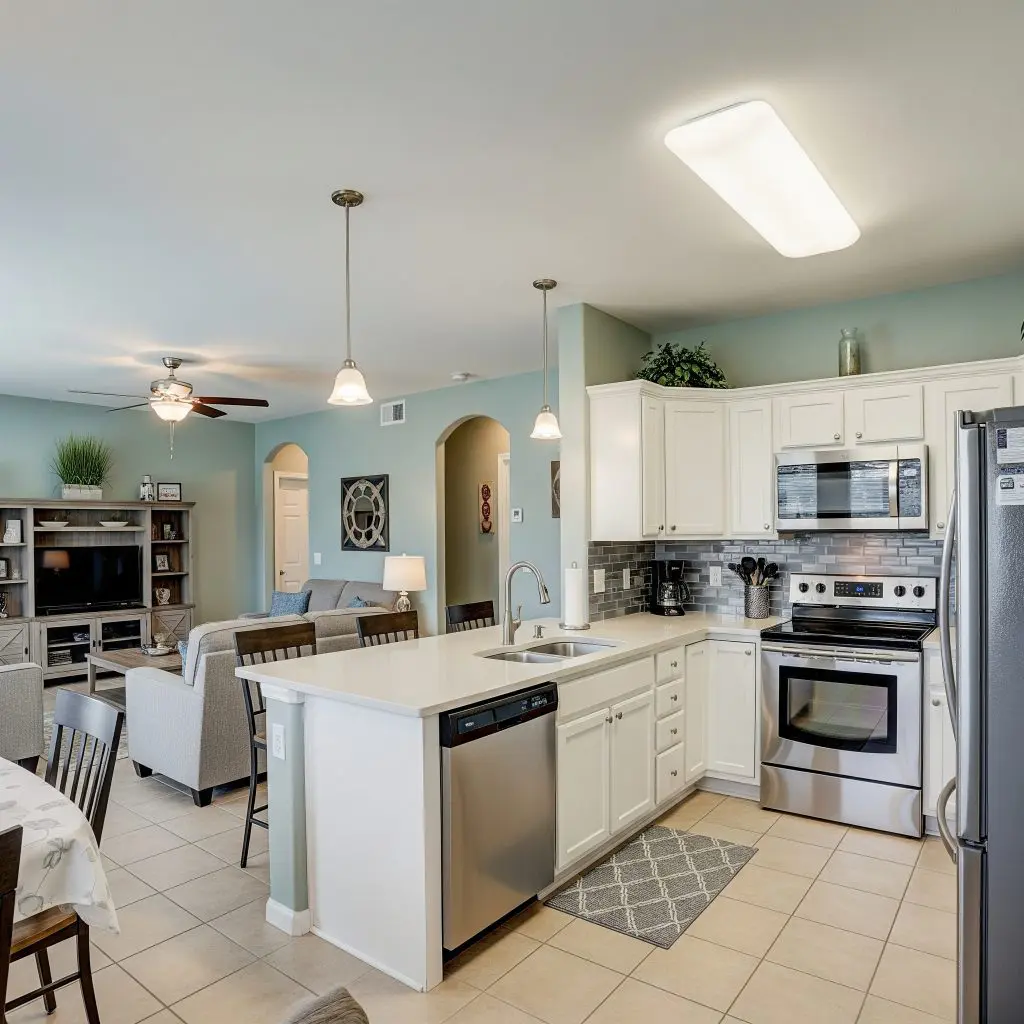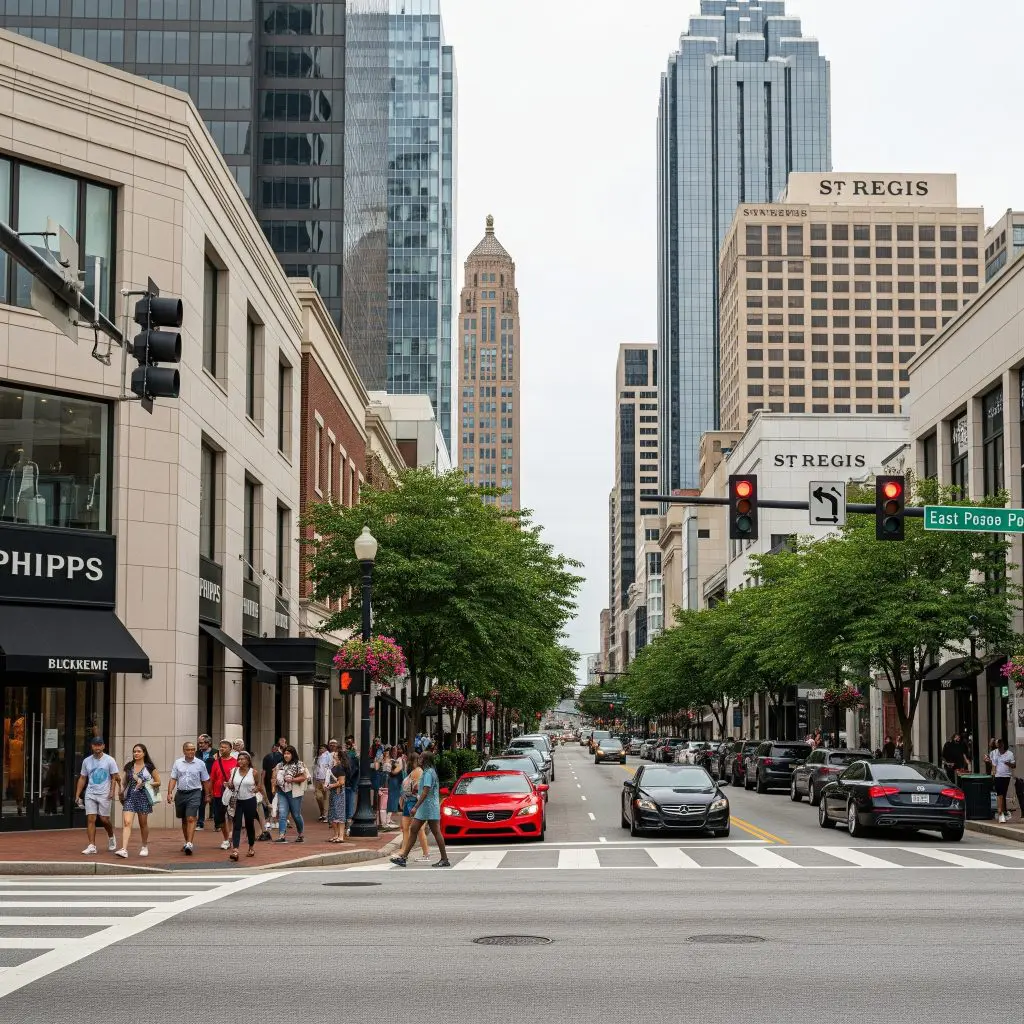Missouri Inflation Budgeting & Real Estate Investment Guide 2025: State-Specific Strategies
As 2025 unfolds, many Americans are facing rising costs due to persistent inflation. Missouri, at the heart of the Midwest, is navigating its own unique economic climate. For residents and investors, understanding how to budget effectively and identify promising real estate opportunities is crucial. This comprehensive guide, tailored specifically to Missouri, provides actionable insights, detailed economic analysis, and practical examples to help individuals and investors make sound financial decisions amidst inflationary pressures.
- Missouri Inflation Budgeting & Real Estate Investment Guide 2025: State-Specific Strategies
- Missouri’s Economic and Inflation Overview in 2025
- Missouri-Specific Budgeting Considerations
- Best Real Estate Investment Opportunities in Missouri, 2025
- Missouri Real Estate Market Conditions and Trends
- Population Growth, Employment, and Economic Drivers
- Inflation Hedging Strategies: Missouri Commercial Real Estate
- Major Metro Markets: Detailed Analysis
- Regulatory Environment and Investment Incentives
- Missouri’s 2025 Economic Forecast
- Practical Examples and Local Success Stories
- Strategic Recommendations for Missouri Investors in 2025
- Conclusion
Missouri’s Economic and Inflation Overview in 2025
Missouri’s 2025 economic outlook remains robust, fueled by emerging industries, resilient job growth, and significant infrastructure investments. While the state’s inflation rate remains below the national average as of Q2 2025 (Missouri: 3.4% vs. US: 4.2%), residents are still experiencing notable cost increases in housing, utilities, and everyday goods.

- Unemployment Rate (2025): 3.8%
- Median Household Income (2025): $67,450
- Population Growth (2020-2025): +1.9%
- Major Economic Drivers: Healthcare, education, transportation/logistics, advanced manufacturing, and agri-business
Recent Inflation Trends
- Rent and home prices up 6.3% since January 2024
- Utilities costs climbed 8% year-over-year
- Transportation expenses steadily rising, especially in metro areas
Missouri-Specific Budgeting Considerations
1. Cost of Living Dynamics
Missouri boasts a relatively moderate cost of living, yet inflation has pushed housing, food, and energy expenses upward, particularly in high-demand metro areas like St. Louis, Kansas City, Springfield, and Columbia.
Need capital? GHC Funding offers flexible funding solutions to support your business growth or real estate projects. Discover fast, reliable financing options today!
Test Your Expertise: The Complexities of the 1031 Exchange

As a sophisticated real estate investor, you understand that the 1031 Exchange is a cornerstone strategy for tax deferral and wealth accumulation. But beyond the basics, the intricacies of the 1031 Exchange rules can pose significant challenges. This quiz is designed to test your in-depth knowledge and highlight critical nuances that separate casual investors from true experts in 1031 Exchange transactions.
Instructions: Choose the best answer for each question.
⚡ Key Flexible Funding Options
GHC Funding everages financing types that prioritize asset value and cash flow over lengthy financial history checks:
-
Bridge Loans: These are short-term loans used to "bridge the gap" between an immediate need for capital and securing permanent financing (like a traditional loan or sale). They are known for fast closing and are often asset-collateralized, making them ideal for time-sensitive real estate acquisitions or value-add projects.
-
DSCR Loans (Debt Service Coverage Ratio): Primarily for real estate investors, these loans are underwritten based on the property's rental income vs. debt obligation ($\text{DSCR} = \text{Net Operating Income} / \text{Total Debt Service}$), not the borrower's personal income or tax returns. This offers flexibility for those with complex finances.
-
SBA Loans: The Small Business Administration (SBA) guarantees loans offered by partner lenders. While providing excellent terms (long repayment, lower rates), the application process is typically slower than private/bridge funding, often making them less suitable for immediate needs. SBA eligibility heavily relies on the DSCR metric for repayment assessment.
🌐 Learn More
For details on GHC Funding's specific products and to start an application, please visit their homepage:
The Ultimate DSCR Loan for Rental Property Quiz

Are you looking to expand your real estate investment portfolio? A DSCR loan might be the perfect tool to help you achieve your goals without relying on traditional income documentation. Test your knowledge with this quiz to see if you're ready to master the intricacies of a DSCR loan for rental property.
- Average Monthly Rent (2025):
- St. Louis: $1,290
- Kansas City: $1,410
- Springfield: $1,060
- Columbia: $1,200
- Annual Homeowners Property Tax: ~0.91% of assessed value (Missouri ranks in the lower third nationally for property tax rates)
2. State Tax Structure
- Income tax: Progressive, maxing at 4.8% for individuals
- Property tax rates: Varied by county, but generally moderate
- Sales tax: 4.225% statewide, up to 10.85% with local surcharges
3. Utilities and Essential Costs
- Missouri’s energy costs remain below the national average, though recent utility inflation (+8%) is squeezing household budgets
- Groceries and transport expenditures are notably higher in urban counties
Best Real Estate Investment Opportunities in Missouri, 2025
Emphasis: Commercial Real Estate
As inflation eats into purchasing power, real estate continues to prove itself as an effective hedge. In Missouri, commercial real estate (CRE) markets offer compelling prospects, particularly in logistics, medical offices, mixed-use developments, and neighborhood retail. Missouri’s central US location and robust transport infrastructure are key assets for investors.
Kansas City
- Industrial/Logistics: Rapid demand growth around Kansas City International Airport and Northland. New fulfillment centers and last-mile warehouses are springing up, driving rents up 7% year-over-year.
- Downtown Redevelopment: Mixed-use office and retail spaces are attracting tech startups and creative companies. West Bottoms and Crossroads remain highly sought-after neighborhoods for adaptive reuse projects.
- Suburban Office Parks: Historically soft, but stabilized in Overland Park and Lee’s Summit with strong health services tenancies.
St. Louis
- Biotech and Medical Office: The Cortex Innovation Community is fueling demand for lab and flexible office spaces. Vacancy rates have dropped below 3% in this niche sector.
- Neighborhood Retail: Well-located strip centers in Chesterfield, Ladue, and Kirkwood are enjoying high occupancy as local retail thrives.
- Urban Mixed-Use: Central West End and The Grove feature high-yield developments blending hospitality, retail, and multifamily living.
Springfield and Columbia
- Emerging logistics hubs fueled by location on I-44 and I-70 corridors
- Medical office demand high due to aging population and expanding university healthcare networks
Missouri Real Estate Market Conditions and Trends
- Statewide Commercial Vacancy Rate: 7.3% (down from 10.9% in 2023)
- Top-Sector Rent Growth (2024-25):
- Industrial/Logistics: +8.2%
- Medical Office: +6.5%
- Neighborhood Retail: +4.7%
- Transaction Volumes: Up 12% for industrial and healthcare assets YTD 2025; steady for traditional retail and office
- Land Prices: Up substantially in proximity to major interstates and secondary metro growth pockets (Liberty, O’Fallon, Wentzville)
Population Growth, Employment, and Economic Drivers
- Missouri’s population: 6.22 million (2025 est.), modest growth concentrated in urban counties (Jackson, St. Louis, Boone)
- Major employers: Centene, Cerner, BJC HealthCare, O’Reilly’s, Edward Jones, Emerson Electric, Amazon
- Strong job markets: Information technology, healthcare, education, logistics, insurance/finance
- Industry expansion: Significant investments in EV automotive, agri-tech, and renewable energy boosting regional economies (notably in Maryville/Northwest and Joplin areas)
Inflation Hedging Strategies: Missouri Commercial Real Estate
✅ Small Business Resources
-
SBA – Small Business Administration
https://www.sba.gov - SCORE Mentors (Free Mentoring & Workshops)
https://www.score.org - Small Business Development Centers (SBDC)
https://americassbdc.org
Are You an SBA Real Estate Loan Expert?

Test your in-depth knowledge on using SBA Loans for owner-occupied commercial Real Estate acquisition. These questions delve into the critical details that can impact your business's growth and financial strategy.
Missouri’s commercial properties, especially in logistics and medical office sectors, stand out as optimal inflation hedges. These asset classes benefit from triple-net leases, annual rent escalators tied to CPI, and long-term corporate occupancies that deliver predictable cash flows.
- Industrial/Logistics Hubs: Lease renewal rates in 2025 often include 3-4% annual rent increases—outpacing inflation projections
- Medical Office Investments: Many facilities are locked into 7–15 year leases with prestigious healthcare tenants
- Neighborhood Retail: Lease structures increasingly pass through operating expense inflation to tenants
✅ Real Estate Investor Resources
-
AirDNA (Short-Term Rental Data)
https://www.airdna.co - Rentometer (Rent Comps)
https://www.rentometer.com - Zillow Research & Data
https://www.zillow.com/research
DSCR Loan IQ Quiz!

Test your knowledge of Debt Service Coverage Ratio (DSCR) loans!
Investors have been targeting value-add and core-plus CRE assets. Retrofits and energy upgrades also offer robust returns by reducing operating costs—a vital inflation-mitigation tactic.
Major Metro Markets: Detailed Analysis
Kansas City Metro
Kansas City’s industrial boom is unrivaled in the state, due to its central geographic location, six interstate junctions, and direct rail access. Submarkets like Liberty, Northland, and Bonner Springs are seeing both ground-up developments and adaptive reuse driving price appreciation.
- Cap Rates (2025): Industrial 5.6%, Medical Office 6.3%, Retail 6.0%
- Public Investment: I-435 expansion, SmartPort logistics park, new Kansas City International Airport terminals
St. Louis Metro
St. Louis, with its legacy institutions and world-class research centers, is fostering both medical and technology-driven office growth. Central West End and Midtown are the hotbeds for mixed-use and healthcare real estate investments.
- Cap Rates (2025): Medical Office 6.1%, Industrial 5.8%, Retail 6.4%
- Development Hotspots: Cortex Innovation District, Downtown West, and Inner-belt corridor (I-170/I-64)
Regulatory Environment and Investment Incentives
- Missouri Works Program: State tax credits for job creation and capital investments
- Chapter 100 Bonds: Local governments can offer real and personal property abatement to attract commercial projects
- Rural/Opportunity Zone Incentives: Enhanced tax deductions in designated growth tracts, including parts of Springfield and Kansas City’s East Side
- HB 402 (2023): Streamlined permitting processes for commercial redevelopment, emphasizing sustainability upgrades
Missouri’s 2025 Economic Forecast
- GDP Growth: Projected at 2.1% (above regional Midwest averages)
- Inflation: Expected to moderate by mid-2026, but remain above the 20-year average throughout 2025
- Commercial Real Estate: Healthcare/biotech and logistics properties forecast to outperform all other asset classes
- Population migration: Net positive in metro counties; outmigration from some rural areas countered by in-migration for urban employment and affordable housing
Practical Examples and Local Success Stories
1. St. Louis Cortex Medical Office
In 2024, a regional investor acquired a 50,000 sq ft medical office in Cortex for $14 million, locked in a 10-year lease with a regional healthcare provider featuring 4% annual escalators. By mid-2025, appraised value had increased by 9% due to strong demand, and operating costs remained steady thanks to green retrofit incentives.
2. Kansas City Logistics Park
An out-of-state REIT invested in an industrial portfolio near the SmartPort logistics hub, capitalizing on 98% occupancy and stable tenancies with national e-commerce retailers. Rents rose faster than inflation, and property tax abatements further increased net returns.
3. Springfield Mixed-Use Redevelopment
Local developers transformed a vacant shopping center into a thriving mixed-use complex (medical office, boutique retail, community spaces) in 2023-24. The project attracted high-quality tenants and delivered a 14% IRR within 18 months.
Strategic Recommendations for Missouri Investors in 2025
- Prioritize investments in logistics and medical office CRE assets with built-in CPI rent escalators
- Target opportunity zones and areas eligible for Missouri Works incentives to maximize after-tax returns
- Monitor suburban and exurban land assemblies near major highways for future logistics park development
- Consider diversified portfolios incorporating neighborhood retail and adaptive mixed-use properties in high-growth metros
- Engage with local brokers and tax advisors to leverage available abatements and regulatory streamlining initiatives
Conclusion
Even as inflation persists through 2025, Missourians can take decisive action through informed budgeting and strategic real estate investments. By focusing on commercial real estate—especially in industrial/logistics, medical office, and mixed-use assets—savvy investors can beat inflation, generate resilient income, and participate in Missouri’s ongoing economic renaissance. Local incentives, steady population growth, and a strong economic base make Missouri an attractive destination for thoughtful, inflation-proof property investment.
Get a No Obligation Quote Today.



